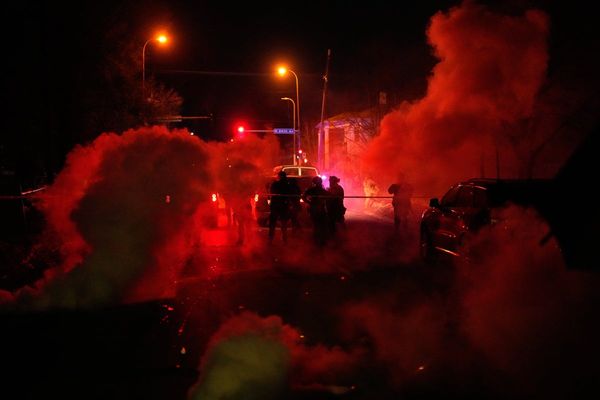Every small town has its own rhythm, its own music. Unknown to those confined to metropolises, there is a beauty in decrepitude, old buildings with their lattice screens, shops with rickety shutters and a road where goats, cows, cars, cycles and pedestrians vie for the same space. Though not quite a small town now, Amritsar had a similarly beguiling beauty; a pace of life that made a mockery of those seeking to get ahead. As actor-author Deepti Naval recalls in her elegant prose in A Country Called Childhood, “It’s getting dark in the city of Amritsar. Shops are shutting down. Street lights come on, casting dim yellow pools of light. Rickshaws and cycles hustle to make their way home. A handcart loaded with gunny bags wobbles down the street. Even Dwarka’s kite shop is winding up. The old Sardar tailor pulls his rickety shutter down, gets on his bicycle, and pedals away. Shahni’s voice can be heard; she is urging her buffaloes home.”
And life went on in an even keel, unflustered, unhurried. There was a joy in the predictable.
Except that Amritsar has seldom had the comfort of peace and quiet. Life and death have often been experienced on the streets of the city. It was that way in 1947 when trainloads of passengers left the city for good, leaving behind forsaken mosques and dargahs, havelis and hutments. It was no different when trains which started from Lahore teeming with passengers, reached here only with a handful, still breathing, still desperate to be safe. If destiny doles out cards to cities and towns, Amritsar was handed the most challenging.
As Deepti Naval writes about a mosque, called ‘maseet’ in local lingo, and the changes in the city’s demography, “In 1952, the maseet was a dark, deserted place since most Muslims in Amritsar had left for Pakistan during Partition. No one lived there…And then in 1956, the first maulvi returned to the maseet. In the wee hours of the morning, while it was still dark, I suddenly heard a wail..., ‘Allahu Akbar’... ‘Azaan’, whispered Mama, ‘Hai... How beautiful...’ That night, before going to sleep, my father, for the first time ever, spoke about the ‘maseet’ as he remembered it from his boyhood days... after 1947, there was not a single Mussalman in Amritsar. Not one. Before Partition, the ‘maseet’ was a vibrant, flourishing place. There would be dhuandhar taqreeran, impassioned sermons over the loudspeaker”.
It was no different in April, 1919 when the British massacred “hundreds of innocents in Jalianwala Bagh” as Navtej Sarna writes in his novel, Crimson Spring. “It was an event which changed Mahatma Gandhi’s view of British rule in India. We still don’t agree on how many people died there. We have accepted the figure of 379, but that’s just the official figure,” says Sarna.
Vibrant way of life
Indeed, Amritsar for all the cruelties of Mughal monarchs on Sikh gurus was a vibrant place, teeming with life, a life where religion was incidental, not a paramount identity. As Neera Chandhoke writes of a Baba Lakhandwala mazaar in Rethinking Pluralism, Secularism and Tolerance, “Here at a simple tomb lit by two oil lamps, Hindus and Sikhs genuflected before the mazaar of a Muslim saint.” The worshippers believed that Baba answered their prayers. A story goes, as Chandhoke writes, “During his travels Guru Nanak Dev came across a goatherd, named Lakhan, and asked him for some food. Lakhan offered to the Guru some sweets cooked out of goat milk. In return Guru Nanak Dev blessed Lakhan and granted him a boon: no one would return empty handed from his doorstep. Across the region, Lakhan is known as the giver who does not deny anyone anything.”
The city inspired ace photojournalist Raghu Rai to piece together a photo-aced book called Amritsar: A Remembrance, where he brought out the dynamism of the Sikh heartland, its spirituality, its shrines, festivals and culture in such a beautiful manner that William Dalrymple called it a love letter to the city. Amritsar was many things to many people. Essentially, the land of the gurus, it was a place throbbing with spirituality, its Sikh shrines, its sufi strains, its pluralist living.
Yet Amritsar was once again in the throes of tumult and turmoil in the 1980s. The demand for Khalistan threatened to ruin the social fabric. And the Golden Temple or the Harmandar Sahib, the pre-eminent spiritual sight of Sikhism, unfortunately did not stay untouched. The gurdwara had repeatedly borne the brunt of Mughal and Afghan incursions and later became the centre of the Punjabi Subah Movement post-Independence. It all paled into relative insignificance with what happened in 1984 with Operation Bluestar. Then the Indian Army entered here, allegedly to flush out to terrorists who had found a safe haven here. Over a thousand deaths were reported, the Akal Takht was destroyed. Only for the gurdwara to be rebuilt yet again as an open house of worship.
Recovering from the past
As Mark Tully and Satish Jacob write in Amritsar: Mrs. Gandhi’s Last Battle, “It was a battle in which infantry, armour and artillery were used against a small group of Sikhs who had fortified the Golden Temple complex and used it as a base from which to defy the authority of the Indian government. The tragedy is that many Sikhs do not accept this definition. They maintain that it was indeed a battle against their community.”
In fact, the Operation Bluestar and events leading to it have got a lot of attention from authors. For instance, The Punjab Story with a foreword by K.P.S. Gill and contributions from Khushwant Singh, Shekhar Gupta, Sunil Sethi, Tavleen Singh, and others also talks of the times, stating, “6 June 1984: The Indian Army storms the Golden Temple in Amritsar. Called Operation Bluestar, the historic event ended the growing spectre of terrorism perpetrated by the extremist leader Jarnail Singh Bhindranwale”. Amritsar was wounded. The city where Hindus and Sikhs had roti-beti ke rishte (broke bread together and married each other) stood divided.
After the mayhem, however, Amritsar recovered again. Samjhauta Express, the train that connected India and Pakistan, resumed. Hindus started going to the Golden Temple again. Life moved on in an even keel.
As written by Jigna Desai in Raghu Rai’s Amritsar: A Remembrance, “Amritsar is a city that never forgets its history as it goes through cycles of destruction, restoration, regeneration and rebuilding”.







